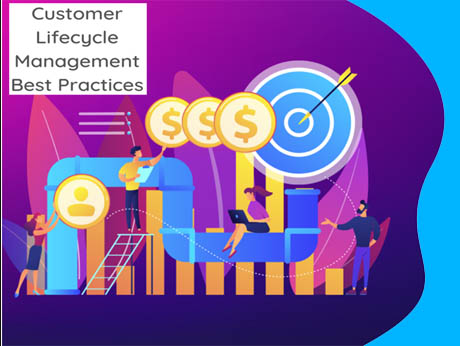
December 18 2019: Anything special or precious is hard to get but harder to look after. Be it a vintage car or why even love! Customers are no different. Today, one of the biggest challenges in the mobile-first world is customer engagement and retention.
Why is Customer Lifecycle Management (CLM) gaining prominence?
The main focus of brands is to steer the customer journey in a manner that maximizes customer lifetime value. The CLM framework forces brands to think of the customer journey as a series of steps and to tap into the pain points a customer faces at different stages of the onboarding journey. This enables brands to recognize the work they need to do to take the customer from point A to Point B.
Here are some prerequisites an organization needs to have in place before setting up a CLM practice.
A Single View of Customer: A 360-degree view of a customer will enable brands to keep in touch with the customer throughout the onboarding journey.
A single data mart that syncs offline and online transactions and records customer behavior at various touch-points will help organizations use the right CLM approach for the right customer.
The messages sent to the customer, the calls and emails made to and by the customer, all of this need to be recorded in the same data mart so that the organization and customer are on the same page. This further enables companies to shape the right messages to the right customers at the right time through the right channels.
Real-time Automation of Customer Segmentation: The entire customer behavior right from the time of installation to uninstallation is captured and this helps organizations to further segment their customers and target them with the right campaigns.
Apart from commonly used segmentation variables like the devices used by the user or the products the user has bought or shown interest in, Ashish shares a very recent
RFM stands for Recency(the recent activity of customer), Frequency(number of purchases) and Monetary value(aggregate value of purchases made) – It divides the customer base into multiple actionable segments. Brands can track their power users or previous users or users who are showing signs of attrition. The RFM model can help trigger actionable campaigns from a customer engagement point of view.
To ensure that campaigns have a significant impact on the business metrics, it is good to get the segmentation essentials right in the following ways:
What are the things to keep in mind while framing a Push Notification Campaign?
User behavior takes center stage: The customer already has limited mindshare and is the target for many apps and notifications. In order to get the desired response, messages need to be relevant to the customer and so, being in sync with user behavior at every step in the customer journey helps to a great extent.
Timeliness: The push-notification is based on the here-and-now action of the customer and so getting the time right is critical. Ashish cites examples of food or content apps that choose the later part of Fridays for notifications about things to do on the weekend.
Continuous optimization through A/B testing: Brands optimize their push notification campaigns for best results based on a testing calendar for testing messages, CTAs and rich media message v/s plain text message.
Set Measurable Goals: Organisations set goals based on the business metrics they want to move.for eg, Higher retention might be the goal for an e-commerce app, higher conversions is what a subscription app might focus on. The key is to tie the goal down to a specific business metric that matters and then track the same.
Identify High-Value Actions (HVA) Linked To Business Goals: Brands identify which specific customer behavior will help achieve their goal. For eg: an E-commerce app that is trying to address the 30-day retention challenge finds data that suggests that customers who complete 2 purchases in the first 30-days are more likely to remain active post 30 days. These 2 purchases are the high-value actions the app needs the customer to complete.
Design campaigns that nudge customers towards the HVA: What can a brand do to get customers to complete the HVA? A welcome message, an offer or a discount coupon to get are some of the things brands try to get the customer to make a purchase or complete the respective HVA.
Brands should lay greater emphasis on the data points that will help personalize the user experience to a great extent and the significance of varying onboarding flows according to the acquisition funnel used, and vice-versa – this he says will increase brand awareness among first-time customers. ( Article sourced from MoEngage)
MoEngage is an intelligent customer engagement platform, built for the mobile-first world. With AI-powered automation, optimization capabilities, and in-built analytics MoEngage enables hyper-personalization at scale across multiple channels like mobile push, email, in-app, web push, On-site messages, and SMS.